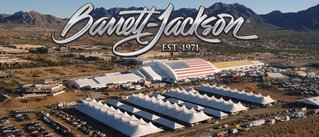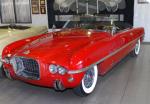Jaguar xk 140
Very Rare!
Brand new, old stock 1955 Jaguar XK-140 grill. Fits XK-140 roadster and coupe.
Did I say RARE? Really a "needle in a haystack" rare find.
An old friend retired and closed up a body shop and he had this tucked away in a box. Yes since the 1950's he forgot he had it. Peter bought it and also tucked it away, we are running out of space and need to down size. Peter has kept this because it's such a "gem". As you may know re-chroming an old grill never comes out right and the reproductions are .... well they are reproductions.
If you're looking for one of these you know that a replica will cost you 1,200 to 1,500 dollars.
This is an original never installed NEW grill. NOT A REPRODUCTION!
Chrome is in excellent shiny condition, not a scratch on it.
Ebay
According to WikipediaThe Jaguar XK140 was a sports car manufactured by Jaguar between 1954 and 1957. Upgrades over its predecessor, the XK120, included better brakes, rack and pinion steering, and modern tube type shock absorbers instead of the older lever arm design. The name referred to its 140 mph (225 km/h) top speed. The XK140 continued to feature the famous Jaguar XK engine with the SE mods from the XK120 as standard, now delivering 190 bhp (142 kW) at 5750 rpm. The special C-Type cylinder head was also carried through from the XK120 catalogue as an option, providing 210 bhp (157 kW).
With the introduction of the XK140 in late 1954 (all sold as 1955 models), the primary visual change was the more substantial front and rear bumpers, with large overriders. Another new feature was the provision of modern flashing direction indicators, operated by a separate switch on the dash. The twin amber lights positioned above the front bumper helped to distinguish the XK140 - until XK120 owners started installing the same equipment.
The front grill was the same size as the grill on the XK120, but was now a one piece cast unit with fewer, thicker vertical slats. Above the grill was the Jaguar mascot, and a chrome strip which extended back over the bonnet. This strip continued down the centre of the boot (trunk) lid, where it contained a red shield with the words 'Winner Le Mans 1951-3' inscribed in gold.The interior was also more comfortable for taller occupants with the addition of 3 inches (76 mm) in length. This was achieved by moving the engine forward which allowed the firewall and dash location to be relocated as well. The new arrangement left no room for the XK120 battery compartment, and the single battery was now repositioned low down inside the wing on the inlet side, making it almost impossible to replace.
In 1956, the XK140 was the first Jaguar sports car to be offered with an automatic transmission. As with the XK120, the availability of wire wheels and dual exhausts were options although most cars imported into the United States had wire wheels. Cars with disc wheels continued to be offered with spats closing the rear wheel arch. The XK140 was available in three body styles. A Roadster or OTS (Open Two Seater) which had a light canvas top assembly that when lowered fitted behind the seats and thus completely disappeared inside the body. The interior of the Roadster was very sparse with no wood embellishments, but with a leather dash. Just like the XK120 Roadster, the XK140 OTS or Roadster had removable canvas and plastic side curtains on light alloy doors. The DHC or Drop Head Coupe had a more substantial padded top that when lowered sat above and outside the body of the car, it also had a fixed windscreen (unlike the removeable windscren of the OTS). The DHC also had roll up windows and a very elegant veneered dash, both of which featured on the FHC or Fixed Head Coupe as well. As a gesture to practicality, a jump seat was added to both coupe models.












